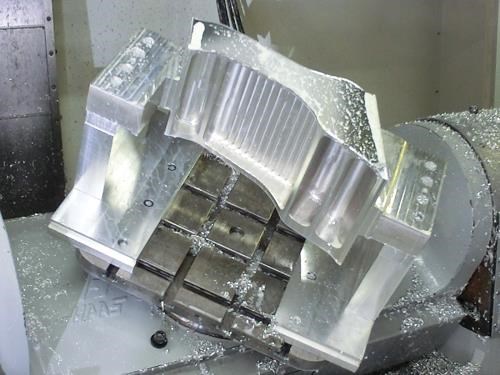Clamping Options for Five-Axis Machining
In five-axis machining, the workholding has to get out of the way. The wrong choice of clamping risks collision and can obscure one of the principal benefits of a five-axis machine.
Share






In five-axis machining, the workholding has to get out of the way. This is one of the challenges. Particularly on trunnion-style machines that pivot the part instead of the tool, the wrong choice of clamping or fixturing risks collisions as the part rotates through compound angles. Meanwhile, one of the promises of five-axis machining is the ability to cut various faces of the part in a single setup. That benefit is compromised if the workholding device—say, a standard vise—covers up the surfaces of the part.
For shops rethinking their workholding for five-axis machining, Haas Automation posted this useful article detailing various fixturing options engineered specifically for five-axis machining.
One other approach, seen in the accompanying photo, is to make the workpiece itself the fixture by clamping the billet and machining the part out of it. This photo was taken at Padgett Machine. Read about Padgett’s experience with five-axis machining here.
Related Content
-
Shop Reclaims 10,000 Square Feet with Inventory Management System
Intech Athens’ inventory management system, which includes vertical lift modules from Kardex Remstar and tool management software from ZOLLER, has saved the company time, space and money.
-
Orthopedic Event Discusses Manufacturing Strategies
At the seminar, representatives from multiple companies discussed strategies for making orthopedic devices accurately and efficiently.
-
Toolpath Improves Chip Management for Swiss-Type Lathes
This simple change to a Swiss-type turning machine’s toolpath can dramatically improve its ability to manage chips.













